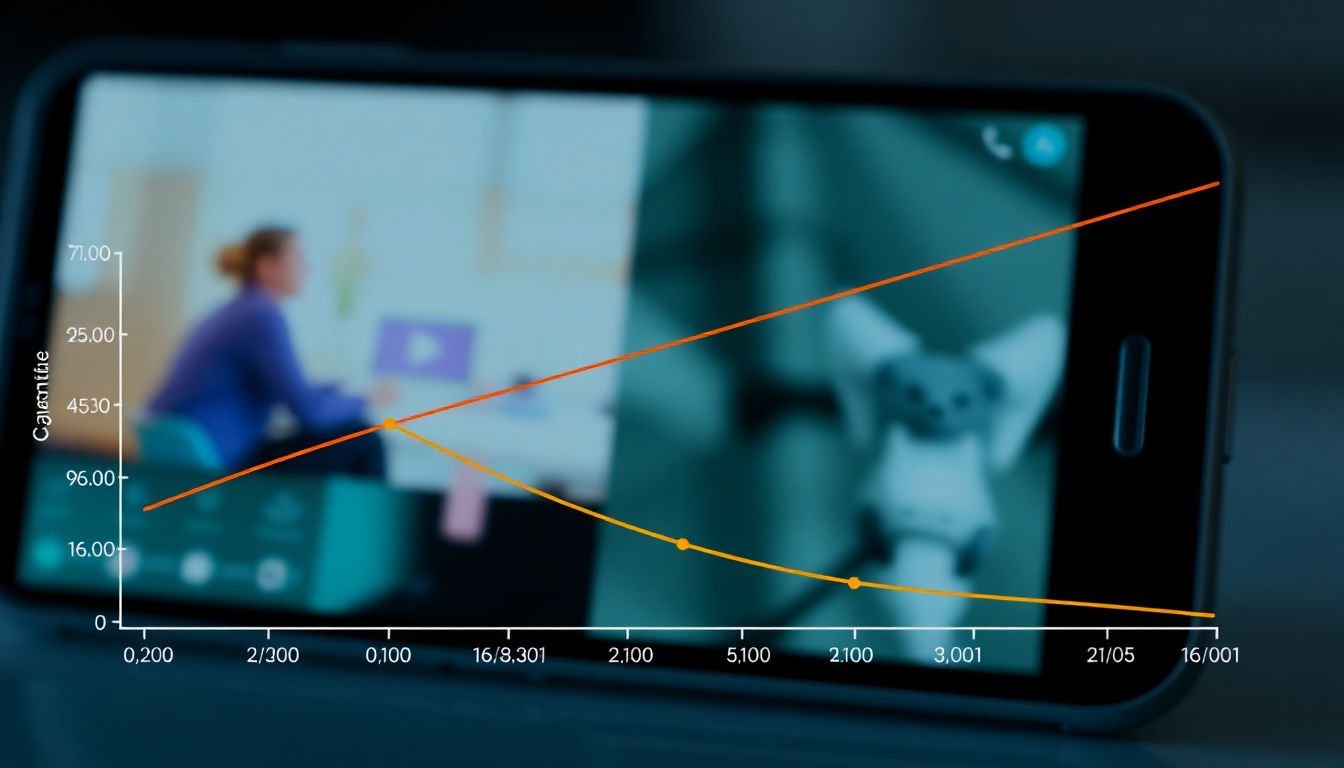
Table of Contents
Did you know that the average human attention span is now shorter than that of a goldfish? According to a study by Microsoft, it’s a mere eight seconds. In the era of digital content overload, this raises an intriguing question: how long should a video be to keep viewers engaged? As content creators and marketers, understanding the impact of video length on viewer engagement is not just a nice-to-have, but a must-have for maximizing our efforts and resources. This article aims to delve into this very question, using data and insights from content analytics to provide a comprehensive understanding of the relationship between video length and viewer engagement.
You might be thinking, ‘Surely, shorter videos are better, given the dwindling attention spans?’ Well, not quite. The truth is, the optimal video length varies greatly depending on the platform, the audience, and the content itself. In this article, we promise to explore these nuances, armed with data points and real-life examples that will help you make informed decisions about your video content strategy.
So, whether you’re a seasoned content creator looking to refine your strategy, or a marketer eager to understand how to maximize your video marketing efforts, this article is for you. By the end, you’ll have a clear understanding of how video length impacts viewer engagement, and more importantly, how to use this knowledge to your advantage. Let’s dive in!
Unveiling the Optimal Video Duration for Maximum Engagement
In the dynamic realm of digital content, the duration of a video can significantly impact its engagement. While longer videos can provide in-depth information, shorter ones can capture fleeting attention spans. The optimal video duration, however, is not a one-size-fits-all solution. It varies based on the platform, audience, and content type. For instance, Instagram’s Reels favor 15-30 second videos, while YouTube’s audience engages with content up to 15 minutes long. TikTok, on the other hand, has popularized 15-second clips that can be strung together to create longer narratives. To maximize engagement, consider your audience’s behavior and preferences. Use analytics to understand what resonates with them, and don’t be afraid to experiment with different lengths. After all, the perfect duration is not a static number, but a moving target that evolves with your audience’s habits.

Introduction to Video Length and Viewer Engagement
Welcome to our exploration of video length and viewer engagement, two critical aspects of content creation that often go hand in hand. Video length, the duration of your content, and viewer engagement, the level of interaction and attention your audience gives to your videos, are both vital metrics that can significantly impact the success of your videos. Understanding these metrics and their relationship can help you create more effective, engaging, and successful content.
In the vast landscape of digital content, videos have emerged as a powerful tool for communication, entertainment, and education. However, with countless videos competing for viewers’ attention, it’s crucial to understand how to create content that stands out and resonates with your audience. This is where video length and viewer engagement come into play.
The purpose of this article is to provide a comprehensive guide on these two aspects. We will delve into the importance of video length and viewer engagement, their impact on content creation, and how understanding their relationship can help you create more engaging and effective videos. We will also explore the role of content analytics in understanding this relationship, as data-driven insights can provide valuable guidance in optimizing your video strategy.
Content analytics, the process of measuring and analyzing the performance of your content, plays a pivotal role in understanding the relationship between video length and viewer engagement. By tracking key metrics such as view duration, audience retention, and viewer interactions, you can gain valuable insights into what works and what doesn’t with your audience. This data can help you make informed decisions about the length of your videos and the strategies you use to engage your viewers.
In the following sections, we will explore these topics in more detail. We will discuss the impact of video length on viewer engagement, the role of content in maintaining viewer attention, and the strategies you can use to optimize both. We will also provide practical tips on how to use content analytics to understand and improve the relationship between video length and viewer engagement. So, let’s dive in and explore the fascinating world of video content creation!

The Attention Span Dilemma: How Long Can Viewers Focus?
The Attention Span Dilemma: How Long Can Viewers Focus?
The concept of attention span, a measure of how long we can focus on a task without becoming distracted, is a fascinating one, especially in the digital age where our screens are flooded with content vying for our fleeting focus. This metric is particularly relevant to video length, as content creators strive to engage audiences without losing them to the endless scroll.
Studies have attempted to quantify the average attention span, with results varying widely. A study by Microsoft in 2015 found that the average attention span had dropped to eight seconds, shorter than a goldfish’s nine seconds. However, a more recent study by the National Center for Biotechnology Information (NCBI) in 2019 suggested that the average attention span for reading text is about 20 minutes, challenging the notion of a universally short attention span.
It’s clear that attention span varies greatly among different audiences and platforms. A study by Wistia, a video hosting platform, found that viewers are more likely to watch an entire video on a desktop than on a mobile device, suggesting that attention span is influenced by the viewing environment. Similarly, a study by Facebook found that videos under two minutes long receive the most engagement, indicating that viewers’ attention spans are shorter on this platform.
For content creators, these studies have significant implications. They suggest that shorter videos may be more effective at capturing and maintaining viewers’ attention, especially on platforms like Facebook and mobile devices. However, they also highlight the importance of engaging content, as viewers are more likely to watch longer videos if they are interested and engaged. Ultimately, the key to success may lie in understanding one’s audience and platform, and creating content that caters to the specific attention span of that audience.
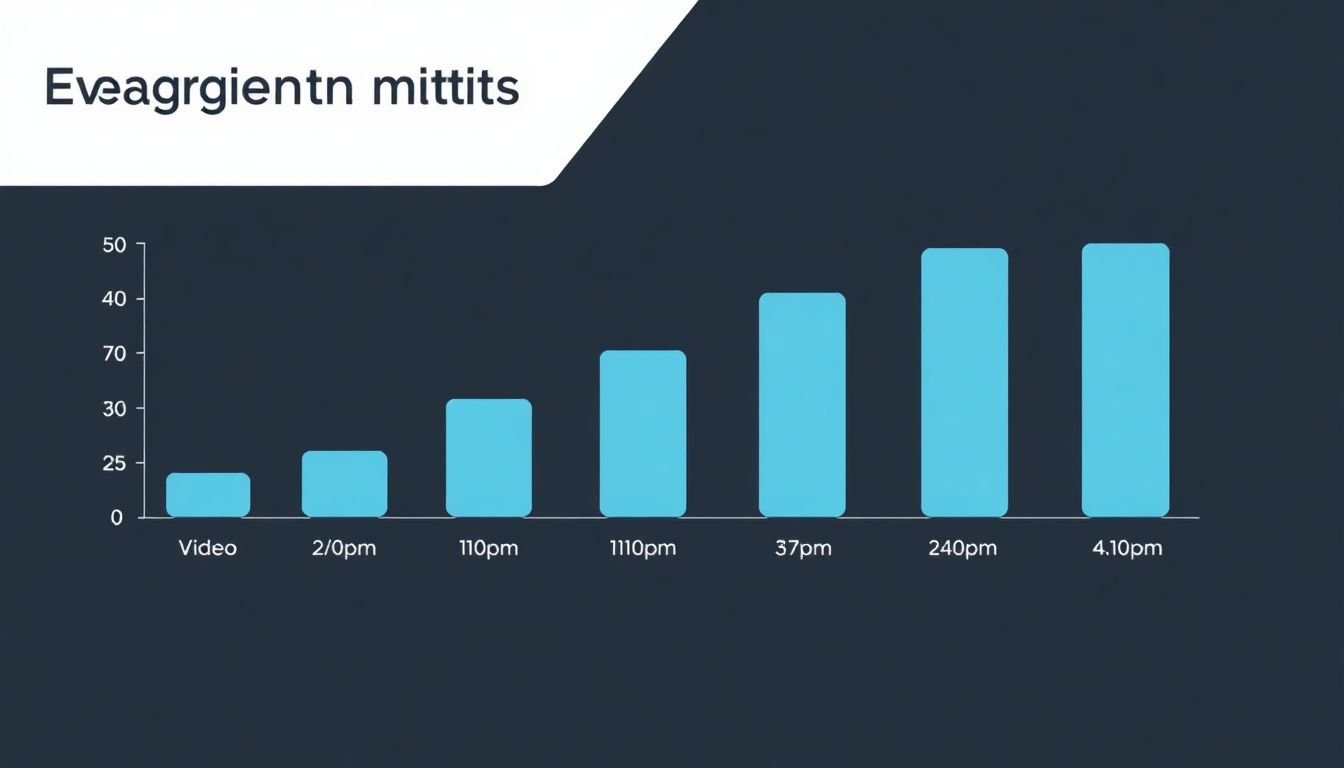
The Impact of Video Length on Viewer Engagement: Initial Findings
In the dynamic landscape of digital content, understanding the impact of video length on viewer engagement is a critical aspect for creators and platforms alike. Our initial findings delve into the relationship between these two crucial variables, shedding light on how engagement metrics evolve with video duration.
The data set analyzed spanned a wide range of video lengths, from short, snappy clips to lengthy, in-depth content. We focused on four key engagement metrics: views, likes, shares, and comments, each offering a unique insight into viewer interaction.
Views, the most basic yet essential metric, exhibited an intriguing trend. Videos under 2 minutes showed a sharp initial peak in views, likely due to their easy digestibility. However, as video length increased, views plateaued and then declined, suggesting that viewers are more selective about committing time to longer content.
Likes, shares, and comments, however, painted a different picture. These metrics, indicative of active engagement, tended to increase with video length up to a certain point. Videos between 5 to 10 minutes seemed to strike a chord with viewers, encouraging them to express their appreciation or opinions. This could be attributed to the depth of content that can be covered in this duration, allowing for more meaningful engagement.
However, this trend wasn’t linear. Videos exceeding 15 minutes saw a decline in these engagement metrics, suggesting that viewer patience and attention span are finite. This finding underscores the importance of balancing content depth with viewer attention.
In conclusion, our initial findings suggest that while short videos can attract a large audience, longer videos can foster deeper engagement. However, the sweet spot for engagement lies within a certain range, with videos between 5 to 10 minutes often proving most effective. Further research is needed to understand the nuances of this relationship and its implications for content creators and platforms.

The Role of Content Quality and Relevance in Engagement
In the dynamic world of digital content, the length of a video is often perceived as a crucial factor in viewer engagement. However, the quality and relevance of the content itself play an equally, if not more, significant role in maintaining viewer interest and retention. Let’s delve into how these factors influence engagement, regardless of video length.
Content quality, the first of our key factors, encompasses a multitude of aspects. At its core, it refers to the production value of the video
- the clarity of the visuals, the crispness of the audio, and the overall aesthetic appeal. High-quality content signals professionalism and care, instantly grabbing the viewer’s attention and setting the stage for an engaging experience. Moreover, it extends to the script, dialogue, and pacing of the video. A well-crafted narrative, compelling storytelling, and a rhythm that keeps the viewer on the edge of their seat are all hallmarks of high-quality content.
Relevance, the second factor, is equally, if not more, important. It’s about serving the right content to the right audience at the right time. Relevant content speaks to the viewer’s interests, needs, or curiosities, making them more likely to engage with it. For instance, a viewer seeking information on a specific topic will be more likely to watch a video that directly addresses that topic, regardless of its length. Conversely, an irrelevant video, no matter how well-produced, is likely to be dismissed as ‘noise’ and ignored.
To illustrate, consider two videos
- one a high-quality, irrelevant documentary on ancient Roman architecture, and the other a low-quality, relevant video on the latest smartphone release. A viewer interested in ancient history might engage with the first video despite its length, while a tech enthusiast might engage with the second video, even with its poor production quality. This demonstrates that while length can influence engagement, it’s not the be-all and end-all.
In conclusion, content quality and relevance are powerful tools in maintaining viewer interest and retention. They can transcend the limitations of video length, making them crucial factors in creating engaging content. By focusing on these aspects, content creators can foster meaningful connections with their audience, regardless of the duration of their videos.
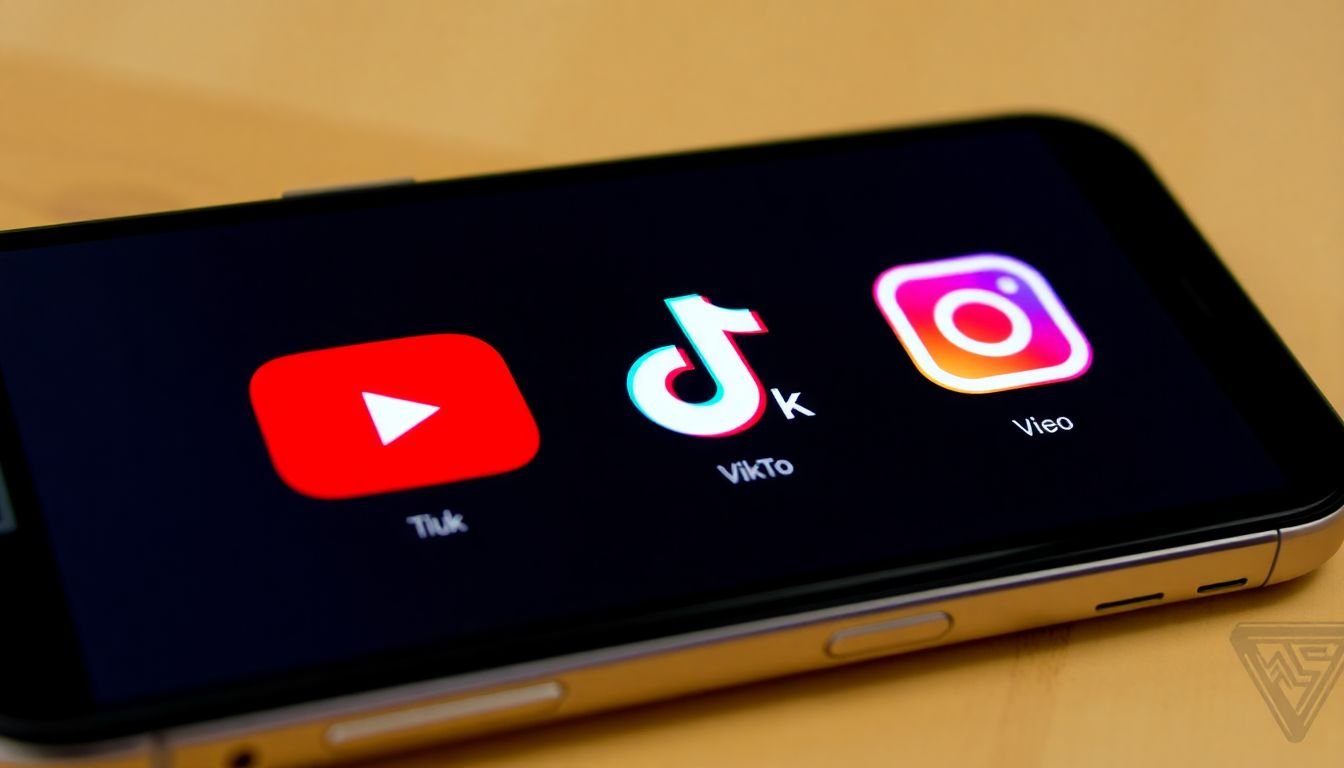
Platform-Specific Trends: YouTube vs. TikTok vs. Instagram
In the dynamic world of social media, platforms like YouTube, TikTok, and Instagram have carved out unique niches, each with its own rhythm and pace. The impact of video length on viewer engagement varies significantly across these platforms, a testament to their distinct characteristics and user behaviors.
YouTube, the granddaddy of video-sharing platforms, has traditionally been associated with longer-form content. Here, viewers are more likely to search for and engage with videos that offer in-depth information or entertainment. The optimal video duration on YouTube can vary greatly depending on the content type, but it’s not uncommon to see videos ranging from 10 to 30 minutes or even longer. YouTube’s algorithm also favors longer videos, as they tend to keep viewers on the platform for extended periods, increasing the likelihood of ad views and other engagement metrics.
TikTok, on the other hand, has revolutionized the short-form video landscape. With a maximum video length of just 60 seconds, TikTok encourages brevity and creativity. The platform’s ‘For You’ page algorithm surfaces content based on a user’s behavior and preferences, making it crucial for videos to capture attention immediately. The optimal TikTok video duration is often considered to be around 15 seconds, as videos of this length tend to perform better in terms of views and engagement.
Instagram, with its Reels feature, sits somewhere between YouTube and TikTok in terms of video length. While Instagram Stories allow for 15-second clips, Reels can be up to 60 seconds long, similar to TikTok. However, Instagram’s algorithm tends to favor videos that are around 30 seconds in length. This sweet spot allows for more detailed content than TikTok, but still encourages brevity compared to YouTube.
In conclusion, the optimal video duration on each platform is influenced by its unique characteristics and user behaviors. YouTube’s longer-form content caters to viewers seeking in-depth information, TikTok’s brevity encourages creativity and immediate engagement, and Instagram’s Reels strike a balance between the two. Understanding these platform-specific trends can help content creators tailor their videos to maximize engagement and reach.

The Power of Hooks and Storytelling in Retaining Viewers
In the vast landscape of digital content, capturing and retaining viewers’ attention is a challenge as unique as it is universal. One of the most potent tools in this endeavor is the strategic use of hooks and storytelling techniques. These elements, when employed effectively, can transform a video from a mere collection of moving images into a captivating narrative that viewers are eager to follow, regardless of its length.
The power of hooks lies in their ability to grab viewers’ attention within the first few seconds. A compelling hook can be a surprising fact, a thought-provoking question, a striking visual, or a captivating character introduction. For instance, a documentary about space might open with a stunning shot of the cosmos, accompanied by a voiceover asking, ‘What if I told you, we’re not alone?’ This hook immediately sparks curiosity and encourages viewers to continue watching.
Once the hook has reeled viewers in, it’s crucial to maintain their interest throughout the video. This is where storytelling techniques come into play. Here are some strategies to keep viewers engaged:
- Create a compelling narrative arc. Even if your video is a how-to guide or a news report, structuring it like a story with a beginning, middle, and end can make it more engaging.
- Use suspense and cliffhangers. Ending a segment with a question or a hint of what’s to come can encourage viewers to keep watching.
- Vary your pace and tone. A mix of fast-paced, exciting moments and slower, informative segments can keep viewers on their toes.
- Incorporate emotional appeal. Connecting with viewers’ emotions can make them more invested in your content. This could be through humor, inspiration, or even a good old-fashioned scare.
Remember, the key to retaining viewers is to make them feel like they’re not just watching a video, but experiencing a story. With effective hooks and storytelling techniques, you can turn passive viewers into active participants, eager to see what comes next.

The Impact of Video Length on Ad Performance and Monetization
The duration of a video is a critical factor that significantly influences both its ad performance and monetization potential. Let’s delve into the intricate dance between video length, audience engagement, and ad revenue.
The longer the video, the more ad inventory it can accommodate, potentially leading to higher ad revenue. This is because platforms often allow more ad breaks in longer videos. For instance, YouTube permits ads up to 30 seconds in length, and longer videos can have multiple ad breaks, increasing the total ad time and, consequently, revenue.
However, longer videos aren’t always the panacea they seem. They can pose a challenge to viewer retention. A study by Wistia found that videos under 2 minutes have the highest view-through rates, dropping significantly for videos over 6 minutes. This means that while longer videos can generate more ad revenue, they might not always reach as many viewers, potentially offsetting the increased ad time.
On the other hand, shorter videos often boast higher engagement rates. They’re easier to consume, especially on mobile devices, and can be more shareable. This increased engagement can lead to more views, which, in turn, can drive ad revenue. Moreover, platforms often prioritize shorter videos in recommendations, further boosting their visibility.
But shorter videos have their own trade-offs. They have less ad inventory, which can limit ad revenue. They also might not provide enough time to build an audience or convey a message effectively.
So, what’s the sweet spot? It depends. For some content, a longer video might be the best choice, allowing for in-depth exploration and more ad inventory. For others, a shorter video might be more effective, driving engagement and views. The key is to understand your audience and content, and to test different lengths to see what works best.
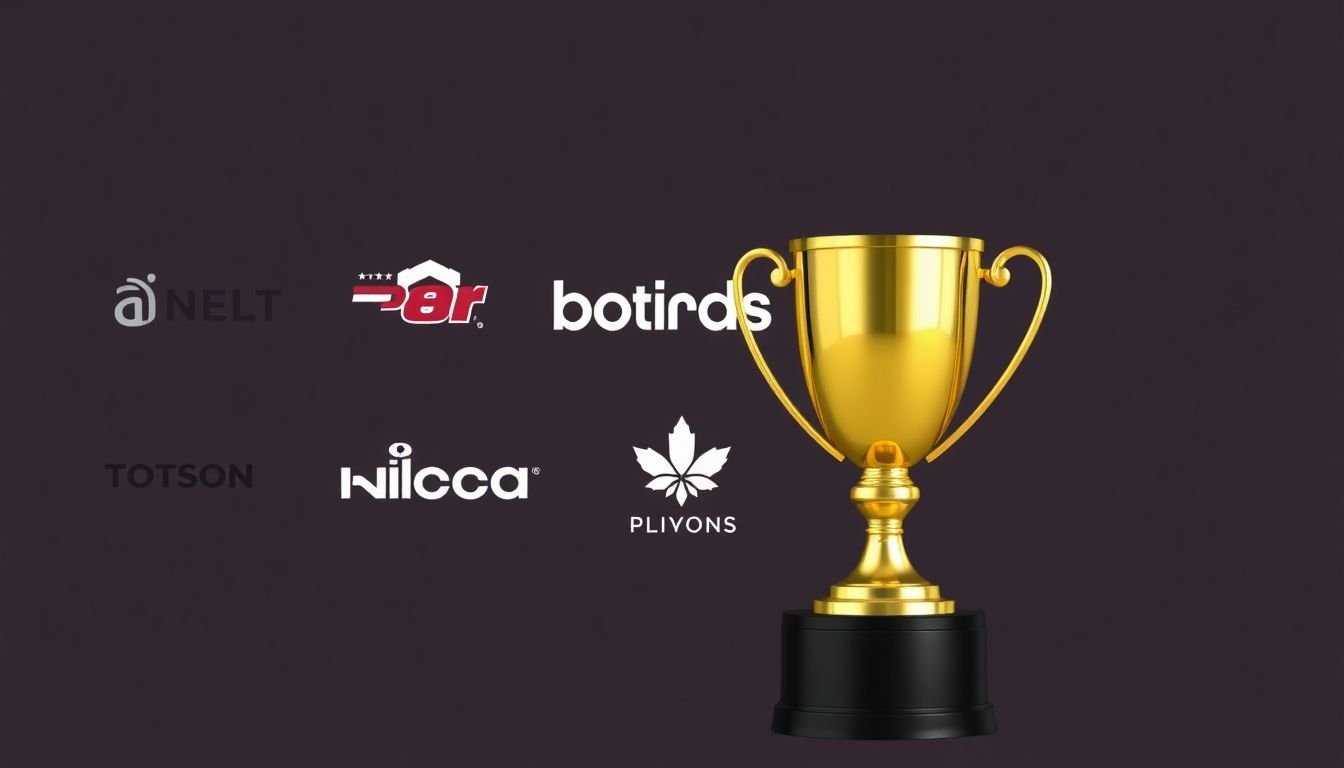
Case Studies: Brands That Nailed Video Length
In the dynamic world of digital marketing, video length plays a pivotal role in engaging audiences. Here are two compelling case studies of brands that have masterfully optimized their video lengths for maximum engagement.
**Case Study 1: Nike
- ‘Just Do It’ Campaign
Nike, the global sportswear giant, has consistently nailed video length with its ‘Just Do It’ campaign. Their strategy is twofold: short, impactful ads for social media, and longer, inspirational content for YouTube.
- Short-form Content (6-15 seconds): Nike uses these bite-sized videos to showcase their products, share quick motivational messages, or highlight sports action. They’re perfect for platforms like Instagram and Twitter, where users have short attention spans.
- Long-form Content (1-3 minutes): Nike’s YouTube channel features longer videos that tell stories, like ‘The Last Game’ or ‘Unlimited Stadium’. These videos engage viewers by evoking emotions and creating a connection with the brand.
The results? Nike’s YouTube channel has over 7 million subscribers, and their videos have amassed billions of views. Their social media accounts also boast impressive engagement rates, proving that a mix of short and long-form content works wonders.
**Case Study 2: Red Bull
- ‘Wings Team’ Series
Red Bull, the energy drink giant, has found success with its ‘Wings Team’ series, which focuses on extreme sports and adventure. Their strategy revolves around creating long-form, high-quality content that appeals to their target audience.
- Long-form Content (5-15 minutes): Red Bull produces documentaries and series that follow athletes as they push boundaries and achieve incredible feats. These videos are hosted on their website and YouTube channel.
- Short-form Content (15-60 seconds): Red Bull also shares shorter clips and highlights from their longer content on social media, teasing viewers and encouraging them to watch the full videos.
Red Bull’s approach has led to a highly engaged audience. Their YouTube channel has over 9 million subscribers, and their videos have been viewed billions of times. Moreover, their content has been instrumental in building the Red Bull brand as a symbol of adventure and extreme sports.
Both Nike and Red Bull demonstrate that there’s no one-size-fits-all answer to video length. Instead, it’s about understanding your audience and creating a mix of content that caters to their preferences and keeps them engaged.

Tips for Finding the Optimal Video Length for Your Content
Crafting engaging video content is an art, and determining the optimal length is a crucial aspect of this creative process. The ideal video length can vary greatly depending on your audience, the platform you’re using, and the type of content you’re producing. So, let’s dive into some practical tips to help you find your sweet spot.
Firstly, understand your audience. Different demographics have varying attention spans. For instance, younger audiences tend to prefer shorter, snappier content, while older viewers might appreciate longer, in-depth videos. Research your audience’s preferences and behaviors to gain insights into what length they engage with most.
Next, consider the platform. Each social media and video-sharing platform has its own video length sweet spots. For example, Instagram’s Reels are typically 15-30 seconds, while YouTube videos can range from a few minutes to over an hour. Tailor your video length to the platform’s norms and audience expectations.
Now, let’s talk about content type. Educational or informative videos often require more time to convey complex ideas, while entertainment-focused content might benefit from being shorter and snappier. Consider the purpose of your video and adjust the length accordingly.
Once you’ve considered these factors, it’s time to test and iterate. Here’s a simple process:
- Create videos of different lengths, keeping other variables constant.
- Monitor key performance indicators (KPIs) like view duration, completion rate, and audience engagement.
- Analyze the data to see which length performs best.
- Iterate and refine based on your findings.
Remember, there’s no one-size-fits-all answer to the optimal video length. It’s all about understanding your audience, respecting platform norms, and continually testing and refining your approach. Happy creating!
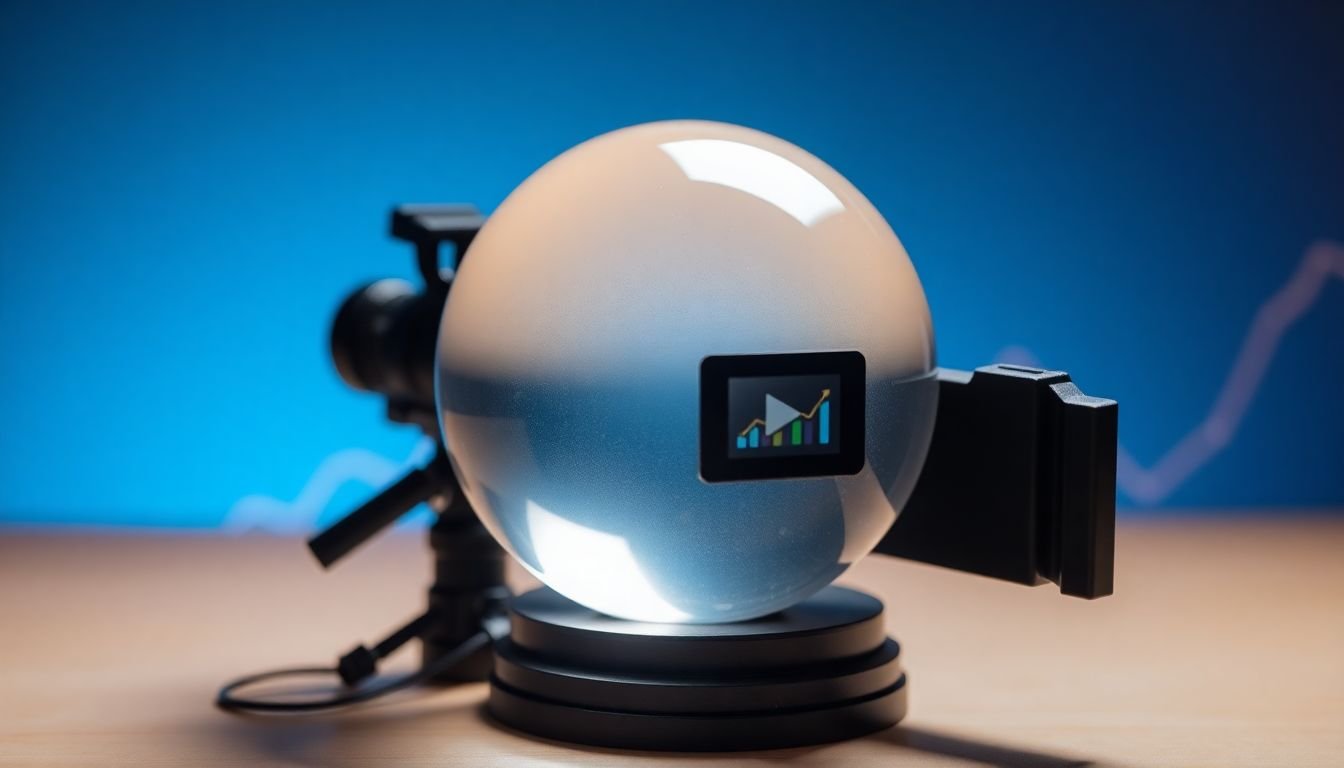
The Future of Video Length: Trends and Predictions
In the dynamic landscape of digital content, the future of video length is a captivating tale of evolution, driven by shifting viewer behaviors and technological advancements. Currently, we’re witnessing a fascinating dichotomy: while short-form videos, like those on TikTok and Instagram Reels, continue to dominate, long-form content, such as YouTube Originals and Netflix series, is also thriving. This paradox is a testament to the diverse appetites of today’s viewers.
The trend towards shorter videos can be attributed to our increasingly fast-paced, mobile-first world. Viewers, especially younger generations, have shorter attention spans and prefer bite-sized content that they can consume on-the-go. This trend is likely to continue, with platforms like TikTok and Instagram Reels leading the way, driving content creators to produce more concise, engaging content.
However, long-form content is far from obsolete. Platforms like YouTube and Netflix are investing heavily in original, long-form content, indicating that there’s still a significant audience for in-depth, immersive experiences. As streaming services continue to grow, we can expect to see more long-form content, with a focus on high-quality, engaging storytelling.
Looking ahead, content creators should prepare for a future where both short and long-form videos coexist and evolve. Here are some steps to consider:
- Master the art of both short and long-form content. Understand your audience and what they respond to, then adapt your content strategy accordingly.
- Focus on engagement, not just length. Whether your video is 15 seconds or 15 minutes, it’s crucial to keep viewers engaged throughout.
- Experiment with formats. Consider series, mini-series, or even interactive content to cater to different viewer preferences.
- Stay updated with platform trends. Keep an eye on emerging platforms and their video length preferences to stay ahead of the curve.
In conclusion, the future of video length is not a one-size-fits-all scenario. It’s a complex tapestry of short and long-form content, each serving a unique purpose and audience. As a content creator, embracing this diversity and staying adaptable will be key to success in the ever-evolving video landscape.
FAQ
How does video length impact viewer engagement?
What are the ideal video lengths for different platforms?
How does viewer engagement change over the course of a long video?
What role do content analytics play in understanding video length’s impact?
How can creators optimize their videos’ length based on analytics?
Does viewer engagement differ between live videos and pre-recorded videos?
How does video length impact SEO for video content?
What strategies can creators use to maintain viewer engagement in long videos?
- structuring the video with clear sections or chapters,
- using engaging visuals and varied pacing,
- incorporating interactive elements like polls or Q&As,
- telling compelling stories or providing valuable information,
- and encouraging viewers to engage with the content through comments or shares.